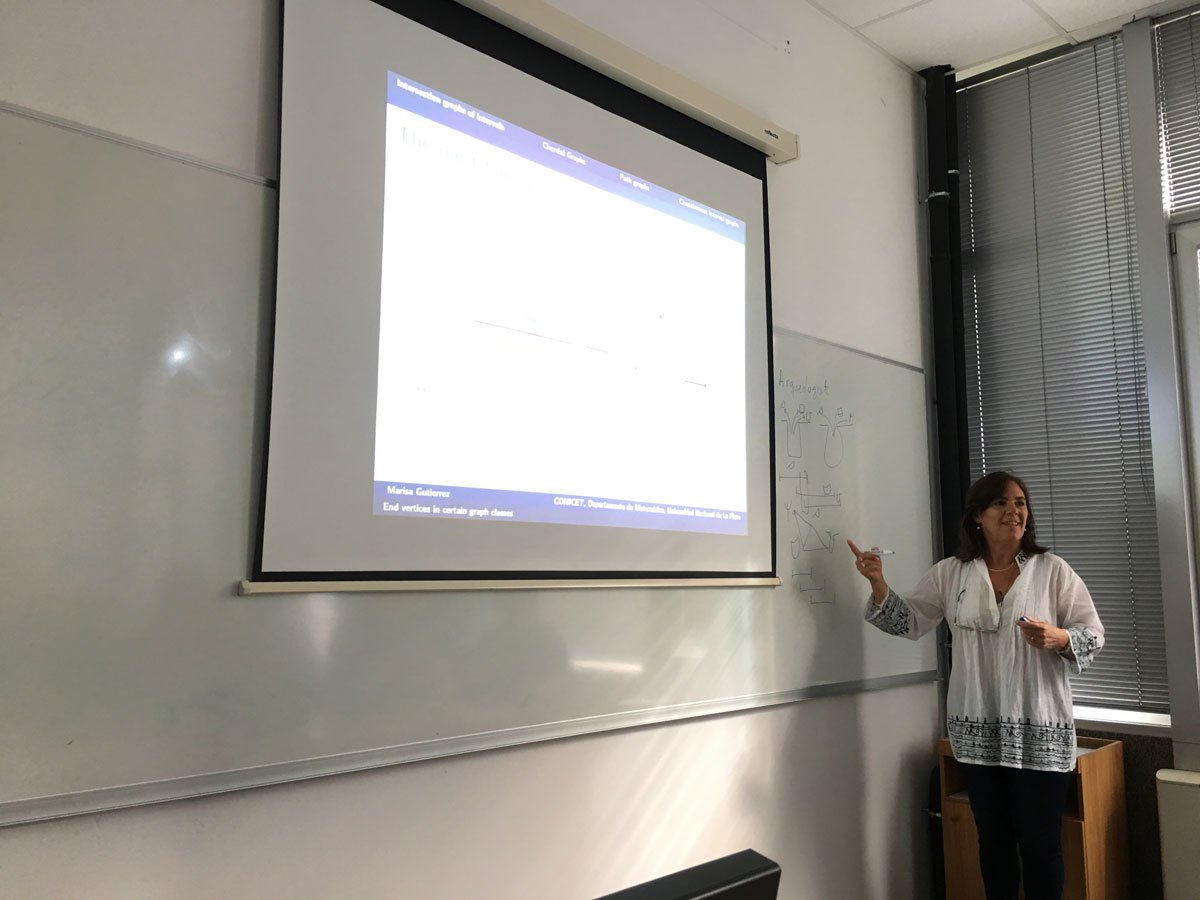Given a finite family of non empty sets F =(A_i)_{i\in I} it is possible define two graphs associated with the family: the intersection graph of F with set of vertices I and such that two vertices i, j are adjacent if and only if A_i∩A_j \ne \emptyset; and the containment graph of F in which I is also the vertex set but two vertices i, j are adjacent if and only if A_i ⊂ Aj or Aj ⊂ Ai. In both cases F is a model of G.
Different classes of graphs can be defined by considering special classes of sets. For example interval graphs are the intersection graphs of intervals of the real line. The path graphs are the intersection graphs of paths in a tree. These graphs have aroused great attention because storing and accessing the structured information of a graph can be made more efficiently if this is the graph of Intersection of families with good properties [2]. On the other hand, the CI graphs that are the containment graphs of intervals of the real line are studied.
In any case it is natural ask which are the vertices of the graph that can be end vertices in the model? An end vertex v of an interval graph is one such that there is a model of the graph such that Av is more to the left in the model. Gimbel [1] totally characterizes these vertices given forbidden vertices in a family of graphs.
In this work we give these kind of characterizations for leaves vertices in the path graphs [3] and end vertices in containment graphs [4].
Bibliography:
[1] J. Gimbel, End vertices in interval graphs, Discrete Applied Mathematics 21 (1988) 257-259.
[2] J.Spinrad, Efficient Graph Representations, American Mathematical Society (2003) USA.
[3] M. Gutierrez and S. Tondato, End simplicial vertices in path graphs. Discussions Mathematicae Graph Theory. In press (2016).
[4] L. Alcon, N. Gudino and M. Gutierrez, End vertices in containment interval graphs. In process.



